Running 10K is probably the first big distance milestone for most runners and hitting this distance can be magical. 10K (6.2miles) races demand respect and attention but it isn’t so far that you can’t train for for them with a bit of effort.
It’s a great stepping stone for half and full marathon distances as well as ultras if you should be that way inclined.
This guide will help you train for and succeed in your next 10K whether it’s your first race or the bug has bitten and you are looking to cross the finish line in record time.
Choosing your race and setting a goal
Setting a goal will help focus your mind to achieve what you set out to do and choosing the right race for you can make all the difference.
Things to look out for when deciding on which race to enter:
Do you have sufficient time to train for the race
You need to give yourself enough time to train properly and prepare yourself for the race so it’s not a good idea to choose a race that is just weeks away.
It’s quite reasonable to think that most people can train enough in 2 – 3 months to finish a 10k race
What conditions can you expect during the race
Choose a race that takes place in seasons, climates or weather you are most comfortable running in.
What kind of support will you have for the race
Having a training partner or team around you is one of the best ways to stay motivated in training to help you reach your goal. If you run with someone else or in a group try and find a race that everyone will enjoy.
Does the race your are entering offer support throughout such as food and water stations or will you have to be self sufficient? Things like this will probably affect the race you choose to enter so make sure you check these things out before entering.
Will you run for a charity or cause
Running for a cause or charity that is close to your heart will give you additional motivation to train and hot your goals.
Is this race a stepping stone to bigger distances and/or faster times in the future
If you have your sights on bigger distances in the future then your first 10k race will be a good stepping stone to increase your distance in the future
Do you want to enter a road or trail 10k race
People prefer running on different terrain so you should select a course that suits your preferred surface conditions. If you are looking to set a fast time then a road race will give you the best chance to do this as trail races tend to have more climbing over uneven terrain.
Would you prefer a competitive or fun event
There are many races that have a more festival atmosphere when compared to some of the more serious races so if you want to have fun whilst doing your race look for events that have live music or something like the colour run or zombie chase. Of course if you want a more serious race then there will be many of these to enter.
Kit and equipment
Getting the right kit will make all the difference in helping you hit your goals. While it is possible to spend hundreds of pounds on running equipment to get the latest and greatest kit, it is possible to get all the kit necessary for your first 10k race for a reasonable amount of money
While you could run in your old tennis shoes and baggy sweat pants they can be uncomfortable when running and could hinder your training and even cause injury.
Shoes
Shoes are probably the most important piece of kit to need to sort out and should be tailored to suit your own running style and the type of course you are running. Things to think about are:
- The type of course you are running e.g. road or trail
- The shape of your foot – do you have a narrow or wide foot
- Your foot strike and gait – do you over or under pronate and do you foot strike with your fore, mid or heel
The best way to find the right shoe for your needs is to visit a specialist running shop and have a expert analyze your gait and discuss your needs so they can recommend the best shoe for you.
Running a road 10k will require a different type of shoe to a trail 10k so it’s important to discuss your intended usage with the advisor when you are selecting a shoe. The same is true for runners who have a problem with ankle pronation and those with a neutral step.
With any running shoes you should look to replace them every 300 – 500 miles or when you notice a significant drop in performance when you are out on a run. If you notice joint pain that you didn’t previously then it may be because your shoes are no longer giving you support and are ready to be replaced.
when you find a pair of shoes that feel good to run in then you should stick with them as your body will thank you in the long run.
Clothing
Getting clothing that fits and is comfortable is another important thing to take into consideration. Just like running shoes, what fits one person and feels comfortable might not fit another person.
Selecting the right clothes for the course and conditions is crucial to your success and selecting clothes just because it’s what you think runners should wear is not advisable either. Your choice of clothing should be chosen for the task in hand not the catwalk!
It’s advisable to try things on in a dedicated running shop if you can so you can make sure they fit and are comfortable. Things to look out for are:
Fit and cut
Shorts, capris, leggings, shirts and jackets should fit comfortably when you buy them rather than when you get into better shape. If you are running to lose weight then you can always treat yourself to some new running gear once you reach your ‘race’ weight.
Support
Getting the right sports bra is crucial no matter what your chest size is, so ladies don’t overlook this piece of kit otherwise your running could be uncomfortable
Climate
Select lightweight sweat wicking materials for running in hot or warm weather. If the weather is cold then make sure you layer up with a sweat wicking bottom layer, insulating middle layer and a wind or waterproof top layer.
Proper running socks will also make all the difference to your running comfort.
Safety
Whether running on roads or on the trails you need to stay safe so look for clothing that has reflective strips and pockets to store essentials like keys, ID, medication/medical alert information and your mobile phone
Accessories
The correct shoes and clothing will generally be all you need for most 10k races but if you decide to up your distance and take on a longer race or if the course is a bit more risky then the race organizers may require to to carry some additional safety gear.
All of the items below can be found in your local running store and are designed to be light and easy to carry when out on a run and as with all things it’s best to test out different options so you get the one that best suits you.
- Water bottle
- Nutritional chews, bars, wafers or gels
- Reflective vest
- Headlamp
- Running storage belt
- Water bottle belt
- Handheld water bottle
- Chafing balm
- Sweatproof sunscreen
- Glare-minimizing sunglasses
- Phone or mp3 arm band
- Heart rate monitor and/or tracking wristwatch
Recovery
Aches and pains are all part of running especially after a race where you put in that extra effort. You can look forward to the delights of muscle soreness, blisters and callouses.
You can minimize the effects by having the following to hand after each race or training session:
- Yoga mat for stretching
- Foam roller, marshmallow stick and/or lacrosse ball for working out muscle tension and knots
- Gel ice packs
Online running stores
There are always bargains to be had online and the following stores are some of our favourites:
- Wiggle
- Chain Reaction Cycles
- Sports Direct
- Go Outdoors
- Ultimate Outdoors
- Ellis Brigham
- Amazon
- Nike
- Sketchers
Training plan – run 10k in 8 weeks
This training plan is intended for beginners who have entered their first 10k and want to develop a level of fitness that will see them finish in as good time.
If you haven’t done much exercise recently it is a good idea to get a check up from your doctor to make sure you are in good shape before embarking on the program.
Don’t forget to warm up before your runs and make sure when you finish you cool down and stretch properly to help prevent injury
About this training plan
Rest days play a very important part of any training schedule as they aid recovery and help prevent injury so don’t ignore these. Muscles build and repair themselves during rest days so if you run every day without taking days off you won’t see much improvement as your muscles don’t have time to repair.
On Tuesdays and Thursday you should run at a comfortable pace where it is possible for you to hold a conversation. If you feel good in the last mile then feel free to pick up the pace to run at your anticipated race pace
Saturday is the day to do your long run. Again this should be done at a conversational pace.
Sunday should be used as an active recovery day so run this at an easy comfortable pace so that it helps to loosen up your muscles
Wednesdays can be used for cross training at an easy to moderate effort for 30 – 40 minutes. Do an activity such as cycling, swimming or use the cross trainer or rowing machine at the local gym.
10k training tips
- Make sure you train on similar surfaces and terrain that are similar to the race course so you can prepare yourself for the challenges on the day
- Where it is possible train in similar weather conditions and temperatures. As an example if you are running a marathon in July then do your long runs when it is hot and humid outside
- Do low impact activities on your cross training days like cycling or swimming to take some of the stress out of your body and help it recover
- Using an app such as Strava or Runkeeper is a great way to track your progress. If you can’t use one of these then make notes in a training calendar to see how well you are doing
| Week | Monday | Tuesday | Wednesday | Thursday | Friday | Saturday | Sunday |
| 1 | Rest | 1.5 m run | CT or Rest | 1.5 m run | Rest | 2 m run | 25-30 min run or CT |
| 2 | Rest | 2 m run | CT or Rest | 2 m run | Rest | 2.5 m run | 25-30 min run or CT |
| 3 | Rest | 2.5 mi run | CT or Rest | 2 m run | Rest | 3.5 m run | 30-35 min run or CT |
| 4 | Rest | 2.5 m run | CT or Rest | 2 m run | Rest | 3.5 m run | 35 min run or CT |
| 5 | Rest | 3 m run | CT or Rest | 2.5 m run | Rest | 4 m run | 35-40 min run or CT |
| 6 | Rest | 3 m run | CT | 2.5 m run | Rest | 4.5 m run | 35-40 min run or CT |
| 7 | Rest | 3.5 m run | CT | 3 m run | Rest | 5 m run | 40 min run or CT |
| 8 | Rest | 3 m run | CT or Rest | 2 m run | Rest | Rest | 10K Race! |
Training aids – running apps
Runkeeper
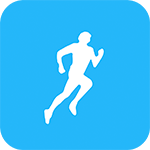
Kick your training into another gear with training plans created by expert coaches like Jeff Galloway. Or, if you want to draw inspiration from your circle of friends, you can share your activities with your social networks and see how you stack up against your friends in monthly leaderboards.
Runkeeper
Strava
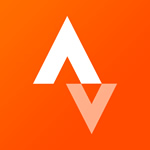
In addition to a fully featured GPS tracking service, Strava shows you a feed of your friends’ most recent activities and lets you compete against them in challenges—such as fastest half-marathon or most miles during a 30-day period. Strava’s top feature is its segment rankings—a leaderboard of all performances over sections of road or trail.
Strava
Nike+ Running

Nike+ Running App provides all the stats, history, and sharing capabilities you could ask for. Nike+ has its share of tricks up its sleeve though. You can get cheered on by a real time crowd, activate a powersong to help you finish off your run, and keep track of your performance in different weather. Nike+ works with out without any of the Nike accessories as well, so if you want to just run with your phone, it won’t be a problem.
Nike+ Running
MapMyRun
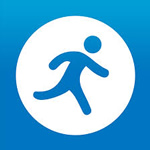
MapMyRun is all about tracking your route. On top of that, MapMyRun tracks your distance, calories, elevation, and your nutrition for the day. The nutritional info is what makes MapMyRun stand out the most. If you have a poor day where you’re lagging behind your regular times you can check in to see what you ate on other days and try to improve your overall health. It also gives you an estimate on how much you should eat, and how much water to drink.
MapMyRun
Runtastic

Runtastic (Android, iOS) uses GPS to track and map your distance exercises, monitoring time, speed and distance, and plots your route in real-time. A personal exercise diary keeps track of your running metrics, and your routes can also be viewed in a Google Earth-style view. A configurable dashboard, detailed graphs of your exercise information, progress sharing over social networks and numerous training plans round out this neat exercise app.
Runtastic
Training aids – running GPS watches
GPS running watches when used in conjunction with a running app can be of great benefit to your training allowing you to monitor your performance and track progress against set goals.
Some of our favourite GPS running watches for less than £100:
Garmin Forerunner 10 GPS Running Watch
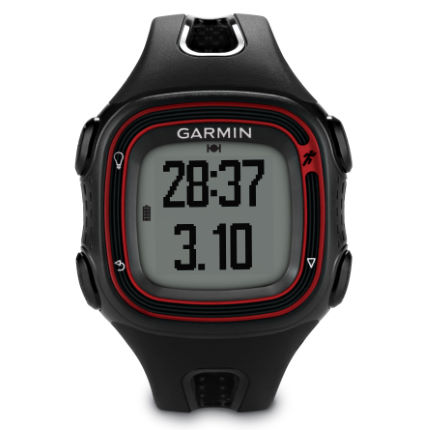 Fitness training made easy from GPS world leaders Garmin. Track how far and how fast you’ve gone at the touch of a button with this sleek GPS watch, then get home and see a map of your travels and share your runs using Garmin Connect™. Winner of a host of awards from Runner’s World, Women’s Running Magazine, Men’s Running Magazine and the 2014 Running Awards.
Fitness training made easy from GPS world leaders Garmin. Track how far and how fast you’ve gone at the touch of a button with this sleek GPS watch, then get home and see a map of your travels and share your runs using Garmin Connect™. Winner of a host of awards from Runner’s World, Women’s Running Magazine, Men’s Running Magazine and the 2014 Running Awards.
£79.99 – save 20% – Free Delivery Buy now
TomTom Runner GPS Watch
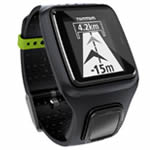 Experience the TomTom Runner GPS Watch built with the runner in mind, light weight and with a clear, tough easy to read screen. One touch button control, vibration alerts and a 10 hour battery life. See your key running stats at-a-glance. View distance, run time and pace on a high-resolution and high-contrast display. Navigate easily through menus with the intuitive One-Button Control. Train more effectively with full-screen graphics.
Experience the TomTom Runner GPS Watch built with the runner in mind, light weight and with a clear, tough easy to read screen. One touch button control, vibration alerts and a 10 hour battery life. See your key running stats at-a-glance. View distance, run time and pace on a high-resolution and high-contrast display. Navigate easily through menus with the intuitive One-Button Control. Train more effectively with full-screen graphics.
£89.99 – save 10% – Free Delivery Buy now
POLAR GEAR Men’s FT7 Heart Rate Monitor
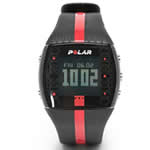 Understand the results of your training and push yourself further with this innovative integrated fitness watch with heart rate monitor. The Polar Gear FT7 displays exactly how many calories you have burned and gives you clear guidance on how to get into shape quicker.
Understand the results of your training and push yourself further with this innovative integrated fitness watch with heart rate monitor. The Polar Gear FT7 displays exactly how many calories you have burned and gives you clear guidance on how to get into shape quicker.
£60 – was £94 Buy now
Polar Loop Activity Tracker
![]() At the tap of a button, Polar Loop shows the time, your total steps, calories burned, daily activity goal and tips to reach it – all on a display of 85 LEDs. Living an active lifestyle has never been this much fun and so easy! Polar Loop connects to the new Polar Flow web service and app for iPhone that automatically syncs via Bluetooth Smart. These free services provide additional analysis and guidance, including illustrative graphs that show cumulative daily activity and periods of inactivity.
At the tap of a button, Polar Loop shows the time, your total steps, calories burned, daily activity goal and tips to reach it – all on a display of 85 LEDs. Living an active lifestyle has never been this much fun and so easy! Polar Loop connects to the new Polar Flow web service and app for iPhone that automatically syncs via Bluetooth Smart. These free services provide additional analysis and guidance, including illustrative graphs that show cumulative daily activity and periods of inactivity.
£59.99 – was £79.99 Buy now
Fitbit Charge Activity Tracker
![]() Energise your day with Charge-a high-performance wristband that’s with you all the time, delivering real-time fitness stats right on your wrist. OLED display shows you steps taken, distance travelled, calories burned, stairs climbed and active minutes. Stay connected throughout the day with Caller ID. And when the day is done, track your sleep and set a silent, vibrating alarm.
Energise your day with Charge-a high-performance wristband that’s with you all the time, delivering real-time fitness stats right on your wrist. OLED display shows you steps taken, distance travelled, calories burned, stairs climbed and active minutes. Stay connected throughout the day with Caller ID. And when the day is done, track your sleep and set a silent, vibrating alarm.
From £69.99 Buy now
Nutrition and healthy eating
A key area in training for any race whether it is 10K or 100miles is eating well and staying hydrated on a regular basis, not just before or after a run. Getting your nutrition right is crucial to how you feel and perform on the day to day.
There are a lot of misconceptions about what runners need to eat before and during a run and as with kit what works for one person might not work for another.
Below you will find a guide of what should work but it’s best to try things out on your long runs to see what works best for you. It’s a good idea to take notes so you can compare how you felt after eating different combinations of foods to see which works best.
Whatever you do, don’t try and experiment with new foods or drinks on race day.
The day before your race
- Drink 2 litres of water throughout the day
- Eat normal portions for breakfast lunch and inbetween meals
- At dinner time up your carb intake with things such as whole wheat pasta with chicken and roasted vegetables or a quinoa salad with tuna and vegetables
The morning of the race
- For breakfast stick with a high options with some protein. Things like bagels with peanut butter topped with bananas or porridge with honey and fruit work well
- Drink 1 litre of water 2 hours before the start and depending on the conditions supplement this with an electrolyte tablet or gel. Make sure you go to the toilet before the start though as theres nothing more frustrating than needing to go mid-race
- Drink an additional 250ml just before the start and consider taking an energy gel or eating an energy bar to give you that extra boost
During the race
- Make sure you stay hydrated and drink regularly. This could be plain water or an electrolyte drink. Most races will have water stations at regular intervals but if not then make sure you carry a water bottle with you
- A sloshing in your stomach means its full so if you get this sensation then stop drinking until it goes away
After the race
- Drink 1.5 – 2 litres of electrolyte drink
- If you sweat a lot during the race then continue drinking an electrolyte drink and avoid plain water for a couple of hours. Your body will have lost a lot sodium in your sweat and drinking water can cause an imbalance in electrolytes and cause you to oversaturate
- Start to replenish carbohydrates and protein stores as soon as you feel ready to eat. Protein helps your muscles rebuild so is vital to aid recovery. Try and eat something that is 4:1 carbs to protein
- When you are recovered and rehydrated then you can eat and drink normally
Recovery and injury prevention
It’s not uncommon for runners to experience aches and pains such as muscle soreness or blisters from training and races.
Many runners can also suffer more serious injuries like sprains, exhaustion or runners knee. Normal irritations are all part and parcel of being a runner and aren’t something to worry about but the more serious injuries can be cause for concern and should be addressed.
To ensure you don’t get sidelined by an injury you can take steps to prevent them from happening in the first place. Some have already been covered and include:
- Setting achievable goals that will challenge you but won’t make you push yourself too much
- Making sure you get the right gear for the job
- Selecting and following the right training program and gradually increasing your distance
- Making sure you are hydrated and fueled correctly before and after your race
As well as this advice about kit and nutrition stretching can greatly reduce the chances of you suffering from running related injuries.
Stretching
Stretching before an after a run is one of the best ways to prevent injury. Stretching can help to minimize tension and soreness and help to keep you running in the best shape.
You should aim to maintain your stretching routine on your off days too and dedicate at least 20 minutes each day to your stretching routine.
Mix your stretching up with yoga or other routines as well if you like.
Pre-run stretches
Before a run you need to loosen up your major muscle groups so they are ready for when you set off. In the first 5 minutes you should do a light warm up walk or plyometrics.
After run stretching
You should let your body cool down and heart rate return to normal before starting your after run stretching routine.
Each stretch should be held for 1 – 2 minutes after your run, making sure you breathe calmly and deepen each stretch with each exhale.
Common running injuries
Being a runner opens you up to a multitude of common running injuries. Listed below are the most common types so you can lookout for them.
Being able to recognize if you are at risk of an injury or already have one will allow you to take some time to recover before anything gets too serious and it puts a stop to your training plan.
Listen to your body before, during and after each run and learn to recognize these symptoms.
Runners Knee
What is it:A repetitive use injury to the knee cap which wears down the cartilage and and can pain around the kneecap when you bend the knee
How to treat it: RICE, Rest, Ice, Compression, Elevation. Take anti-inflammatory pain relievers, stretch and strengthen the muscles around the knee and consider more supportive inserts for your shoes.
Sprain
What is it: A sprain is the stretching or tearing of ligaments around a joint. In runners this is quite often the ankle and is caused by an awkward or extreme movement of the joint. A sharp pain is often experienced with this type of injury
How to treat it: RICE, Rest, Ice, Compression, Elevation.
Tendinitis
What is it: Tendinitis is the inflammation or irritatation of a tendon around a joint caused by repetitive movements and tight muscles. It causes pain, stiffness and tenderness. In runners it is often the achilles tendon where this occurs
How to treat it: Stretch the surrounding area and RICE, Rest, Ice, Compression, Elevation.
Muscle strain
What is it: Muscle strain is a tear in the muscle caused by overstretching
How to treat it: RICE, Rest, Ice, Compression, Elevation.
Stress fracture
What is it: A stress fracture is a small crack in a bone. Usually in runners this is in the foot or shin and is caused by doing too much too quickly. Pain and sometimes bruising occur around the fracture which often get worse with training.
How to treat it: Take a week or two off from training and rest. After this time slowly start your training again and ease back into your routine.
Shin splints
What is it: A pain down the front or side of the lower legs around the shin bone is often caused by shin splints.
How to treat it: Take a week or two off from training and rest. After this time slowly start your training again and ease back into your routine.
Plantar Fascitis
What is it: When you strain the tissue along the bottom of the feet that connects the heel to teh toe it is called Plantar Fasciitis. Strained Plantar Fasciitis can become weak, swollen or inflamed and cause pain in the heels, especially when first getting out of bed in the morning or when standing, walking or running for long periods of time
How to treat it: You can treat Plantar Fasciitis with rest and by stretching the calves and bottom of the feet
Iliotibal (IT) band syndrome
What is it: IT band syndrome is when the IT band which runs from the hip to the outside of the knee becomes inflamed and rubs against the outside of the knee causing pain.
How to treat it: Scale back your running for a week or two and stretch often. You can also apply heat before running and working out and ice after you finish.
The best 10k races to enter in the UK
Looking for some inspiration for some trail and road 10k races to enter. We’ve picked our favourite races from around the UK below:
Top 10k road races
Harrogate 10K
Where: Harrogate, North Yorkshire | When: July
A 2 lap rolling route through leafy residential avenues with a fast final mile right in the centre of the beautiful Yorkshire spa town of Harrogate. The Harrogate 10k offers a fast but challenging course and a great atmosphere with plenty of delightful cafes, including the world famous Bettys tea rooms, close to the finish line for that well deserved after race cake.
Harrogate 10K – More Information
Morrisons Great Yorkshire Run 10k
Where: Sheffield | When: September
Since the first event in 2007 thousands of runners, joggers and walkers have taken on the Morrisons Great Yorkshire Run in aid of fitness, fundraising and fun. Every year Sheffield lives up to its reputation as a hotbed of musical talent, with local bands entertaining and motivating runners along the 10k.
Morrisons Great Yorkshire Run 10k
Penistone 10k
Where: West Yorkshire | When: November
The Help The Aged Leeds Abbey Dash has all the ingredients you’ll need to race up a storm, and its November timing makes it the perfect late-season PB attempt. The traffic-free road course (complete with chip-timing) means you’ll have no distractions, and if that’s not enough to spur on, just think of the amount the event raises for charity – last year’s event raised hundreds of thousands of pounds for Help the Aged.
Penistone 10k – More Information
Admiral Swansea Bay 10K
Where: Swansea| When: September
The Swansea Bay 10K comes with some serious razzle dazzle – this big-hitting race boasts more than £7,000 of prizes, a fiercely-contested fancy dress award and music playing at the halfway point and finish. And it’s not just the buzzing, friendly atmosphere that draws people back year after year. If you’re coming to Wales in search of fast times you won’t be disappointed – the out-and-back course is pancake-flat.
Admiral Swansea Bay 10k – More Information
Liverpool Spring 10k
Where: Liverpool | When: May
You’ll fly on this course. The route starts and finishes in the same place close to ‘the needle’ on the Review Field at Sefton Park. It is a fast course using both the pavement within Sefton Park and the closed road around the edge. The route is very spectator friendly with a cafe 200m from the start/finish and a live drmming band playing outside.
Liverpool Spring 10k – More Information
Mad Dog 10K
Where: Southport | When: February
Some like to dress up; other like to take it seriously. Either way, this 10K is one of the best around. Taking place along the Southport shore line, this race is fast and flat and is perfect for anyone looking to run a quick time. It’s also a great event for fun runners, and those who dress up really do add to the atmosphere. The course can get narrow at times, and the wind can be strong too.
Mad Dog 10K – More Information
Bupa Great Manchester Run
Where: Manchester | When: May
Televised live on the Beeb, this is Europe’s leading 10K race.
It starts and finishes in Manchester City centre, and includes a ‘run-through’ shower and a few ‘Bands on the Run’ along the way – ao there’s no need to worry about a lack of music or refreshment on the day. More than a quarter of a million runners have taken part in this fantastic race, so add to that number and sign up.
Bupa Great Manchester Run – More Information
Great North 10k
Where: Newcastle | When: July
Thousands of runners, walkers and joggers will pound the pavements of Gateshead at the Morrisons Great North 10K.
At the North East’s biggest 10k runners are given the unique opportunity to cross the finish line inside Gateshead International Stadium as their family and friends cheer them on. The event has welcomed a host of runners across the finish line, including a World and Olympic marathon champion and hundreds of Gurkha soldiers.
Great North 10k – More Information
South Coast 10k
Where: Seaford | When: July
The South Coast Half Marathon, 10K and 5K take place in and around the town of Seaford in East Sussex. The course is lapped and takes in the scenic views from the seafront. The South Coast 10k is aimed at all abilities, whether you are a beginner, experienced or professional in running the race guarantees large crowds to cheer you along!
South Coast 10k – More Information
Queen Elizabeth Olympic Park 10km
Where: London | When: July
Within the confines of London’s Queen Elizabeth Olympic Park. A phenomenal London location avoiding all road crossings. A mixed ability race series where all runners are welcome.
Queen Elizabeth Olympic Park 10km – More Information
Top 10k trail races
Turnpike Trot
Where: Whitby | When: October
Sign up for the ‘Turnpike Trot’ 10k and see the beautiful Moors like never before! New runners, budding athletes, families and friends all welcome on our fully marked and marshalled trail runs, with prizes, medals and refreshments.
Turnpike Trot – More Information
St Wilfred’s Muddy Boots 10k
Where: Ripon, North Yorkshire | When: February
The St Wilfrid’s Muddy Boots is a multi-terrain run over undulating farmland and North Yorkshire countryside. It’s not the kind of race you are going to score a personal best. It’s the type of race where you will feel pleased with yourself for doing something on a cold winter’s day.
St Wilfred’s Muddy Boots 10k – More Information
Bath Skyline 10k
Where: Bath | When: January
Recently moved a few degrees around Bath’s hilly horizon to allow the event to grow in a friendly venue with good facilities and still retain the fantastic views of the Bath Skyline from the Cotswold hills. The new course will be a single 10km loop which will allow runners more space on the route. There will be woodland, there will be hills and there will be a very healthy dose of mud – everything you have come to expect from the Skyline runs. The jewel in the crown of this brand new course is Pipley Wood, an ancient woodland which we have been given special permission to use for the event. This wood has never been farmed so expect an untamed wood with huge trees, untroden paths, meandering streams and mud, lots of mud! Definitely one for the off road shoes!
Bath Skyline 10k – More Information
Machen Mountain Run
Where: South Wales | When: August
One for fell runners, this is a gruelling off-road mountain 10k in South Wales. There’s more than 1,000ft of ascent to contend with over a variety of paths – some more defined than others. Proceeds go towards sport facilities in the village.
Machen Mountain Run – More Information
Lakeland Trails 10k – Helvellyn
Where: Helvellyn, Lake District | When: November
Starting and finishing on the shores of Ullswater in Glenridding, the 10km Helvellyn Trail Run follow a circuit along well marked and marshalled footpaths and bridleways that take you into the foothills of Helvellyn, with elevated panoramic views of Ullswater, and dramatic vistas of Helvellyn and the surrounding peaks. Underfoot conditions are generally good for those used to off road running, but can be tricky in places.
Lakeland Trails 10k – Helvellyn – More Information
The Hoka One One Trail Race
Where: Keswick, Lake District | When: May
The 10k distance is perfect for entry level runners who want to experience the joys of trail running and racing. Alternatively 10k is a perfect sprint distance for the more serious athletes who want to gain a personal best or are in training. The course is a mixture of wide open trails, some single track, a few easy hills with some road and fields to finish. If you’re new to trail running then this is the course for you, being a short distance with a small level of ascent. Expect amazing running in some of the Lake District’s best running country along the shores of Derwentwater and under the fell side of Catbells. The race will start halfway down Derwentwater at Low Brandelhow, meeting at the Keswick Mountain Festival Village on Crow Park where you will be taken to the start location on one of the Keswick Launch Company’s boats. This means your race journey starts with a beautiful short cruise where you’ll be able to see the spectacular scenery surrounding Keswick.
The Hoka One One Trail Race – More Information
The Whirlow 10k Trail Challenge
Where: Sheffield | When: August
The route has been chosen because of its stunning scenery and the varied nature of the route. It’s also chosen to be a ‘challenge’ so it’s certainly undulating, mostly uphill in various gradients for the first half and mainly downhill for the second, with a good last push uphill! Whilst most of the route is on good tracks and Public Rights of Way it also crosses some tricky terrain. Expect to run on mostly manicured trails, grassland, field edges, some road and a little open moorland.
The Whirlow 10k Trail Challenge – More Information
Bookham 10K
Where: Surrey When: February
With 285m of ascent and descent, the Bookham 10K is far from an easy ride – the playful, weaving course takes runners through some of the North Downs’ most fabulous scenery on a muddy cross-country trail around Bookham Woods. The views offer ample distraction from the race’s ups and downs, and be sure to stop and take in the picture-postcard views when you reach St Barnabas-in-Ranmore Church – the historic building marks the single-lap race’s topographical and scenic high-point.
Anna Frost 10k
Where: Coed y Brenin When: May
The Anna Frost 10k is a trail race aiming to make trail running accessible to all standards, and most especially women, holding close the aspect of an authentic, panoramic, and challenging trail running, filled with the experience of natural trails, woodlands and rivers in the majestic beauty of of the world-renowned Coed y Brenin Forest Park in the Snowdonia National Park, Wales.
Anna Frost 10k – More Information
Tatton Park 10k
Where: Tatton Park When: March7
The Tatton Park 10k is a lovely, scenic offroad parkland 10K with a friendly atmosphere with the aim of raising more for AgeUK. This trail run goes right through the grounds of this stunning medieval estate and is perfect for experienced runners and first-timers alike. You can enjoy the views across Tatton Mere and challenge yourself to reach a new PB!
Tatton Park 10k – More Information
Do you have any 10k races you have run and would recommend – let us know in the comments below:
